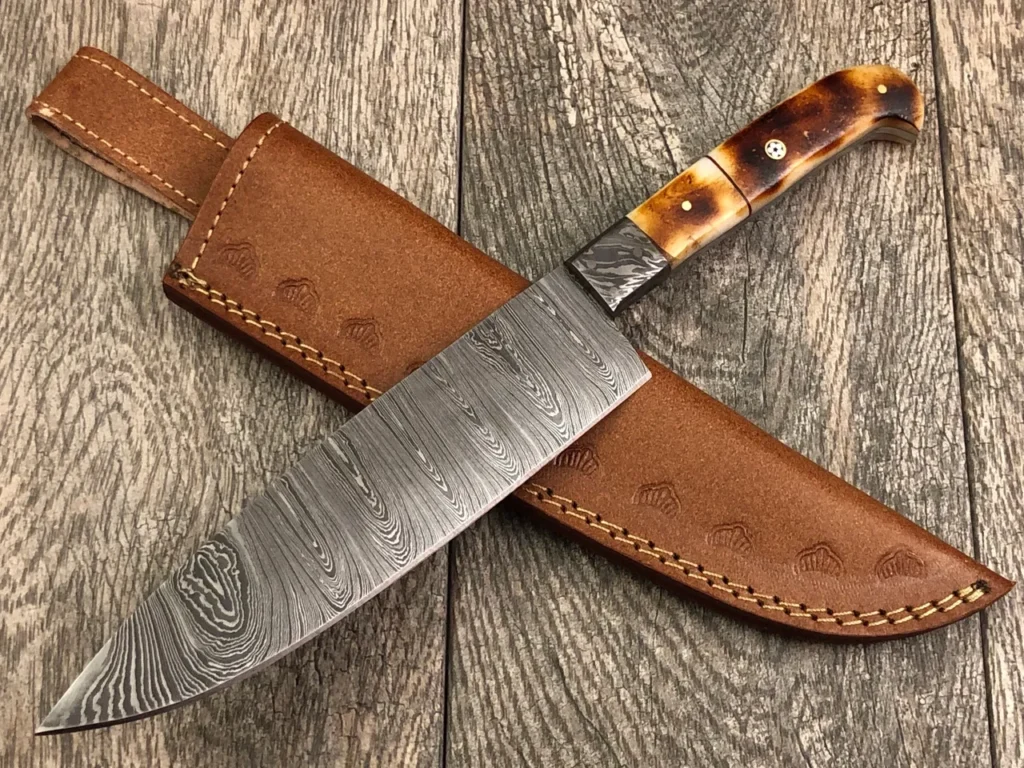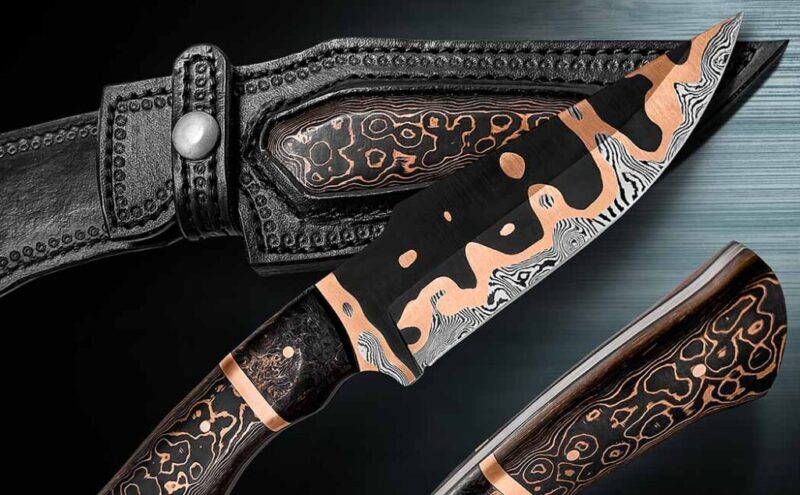As the appeal of Damascus knives grew over the centuries, so did the need for innovation — not merely to enhance the traditionally acknowledged strengths of Damascus blades, but to match the shifts in demands of a global customer base. Greater attention to crafting techniques, apprentice training programs and an embrace of technology have all been instrumental in reshaping this ancient industry. Trends, influenced by shifts in consumer lifestyle and preference, continually redefine what consumers seek in a perfect Damascus knife, thereby narrating a new chapter for this ancient craft in the modern world.
A Damascus knife, renowned for its unique wavy patterned designs, is more than just a lovely artifact. This type of knife gets its name from the city of Damascus, known anciently as a bustling hub of trade and craftsmanship. Celebrated for its striking patterns resembling flowing water and excellent durability, the Damascus knife is a cutlery marvel. Among integrated circles of chefs and knife-enthusiasts around the world, it embodies a fusion of artistry, functionality, and legacy.
History of the Damascus Chef Knife

The meticulously layered steel is blended with high and low carboncore components that contribute to the knife’s strength and edge retention. The more the steel is folded and hammered, the more the patterns on the Damascus knife become. The handle, often made of premium-quality wood or bone, is just as significant as it provides balance, durability, and aesthetic appeal.
Crafting Damascus knives dates back to around 500 AD, and, perhaps surprisingly, it was a trade born out of necessity rather than aesthetic whimsy. The early smiths, by folding layers of low and high carbon steels during the knife-making process, discovered they could fashion blades of superior edge retention and toughness. This characteristic layering process now defines the beautiful ripples we see on all Damascus blades and contributes largely to their current popularity.
The Anatomy of a Damascus Knife

Creating a Damascus blade begins with sandwiching layers of high and low carbon steels, followed by heating and hammering them together. This process is repeated many times to create hundreds, sometimes thousands, of layers. The billet is then shaped into a blade, often followed by an acid etch, an important step that reveals the iconic pattern unique to every Damascus knife. This meticulous process showcases the symbiosis of age-old methods with contemporary designs, resulting in a piece that is as functional as it is visually striking.
The most defining feature of a Damascus blade lies in its distinctive wavy or swirling pattern that adorns its surface. This “watered silk” or “damask” pattern is the result of numerous processes including folding, hammering, and acid etching, which bring out the contrasts in the multiple layers of steel. Beyond its aesthetic allure, this method grants the blade its long-lasting sharpness that make it an exquisite tool.
Changes and Innovation in Damascus Knife Making

Originating with rudimentary tools and techniques, the process changed to the use of a combination of high and low carbon steels that created a balance of hardness and toughness. The methods used in the construction of Damascus blades in the past embody innovation, as early smiths made notable strides in refining their knowledge and skill, incrementally developing techniques such as folding, acid etching, and visual marking, all in an effort to improve their blades’ performance and aesthetic value.
Today, the Damascus knife-making industry has embraced technology and innovation while preserving traditional craftsmanship. Modern technology, such as Computer Numerical Control (CNC) machines, precision lasers, and advanced heat-treatment processes, have allowed smiths to achieve unparalleled precision, consistency and scale in their craft. These innovations are reshaping the industry, with Damascus knives becoming not only a functional tool but also an elegant work of art, thanks to the blend of traditional techniques and present-day innovations.
Beyond steel, smiths are experimenting with a range of materials to enhance both functionality and aesthetics. The use of stabilized wood, composite materials and exotic materials like mammoth teeth in handles, not only provide uniqueness but also longevity to these knives. For the blade, studies in metallurgy have introduced materials like nickel and powdered steels, providing greater flexibility for achieving diverse patterns and functionalities.
The Latest Trends in Damascus Knife Making

Today’s consumers appreciate the traditional appeal of Damascus steel, yet they desire it in modern, more refined designs and look. This has given rise to a variety of Damascus knives, featuring patterns and unique color schemes, catering to a broad range of preferences. From culinary professionals to outdoor enthusiasts, the market responds dynamically to satisfy the varied aesthetics and usage requirements.
Personalized, tailor-made knives offer an extraordinary appeal for those seeking unique, one-of-a-kind pieces. These knives cater not just to the individual needs in terms of blade and handle shape, size, and material, but also to their aesthetic preferences. This custom-made approach has significantly enhanced the allure and value of Damascus knives, elevating them to luxurious artifacts.
DIY kits are providing enthusiasts an opportunity to experience the process of creating their own Damascus knife. With a guide, pre-shaped blades, and handle materials included, the DIY trend is adding a new dimension to the industry by allowing individuals to engage beyond simply owning these exquisite knives. This immersion strengthens the connection between users and their tools, lending a deeper appreciation for the craftsmanship inherent in every Damascus knife.
The Damascus knife making industry has shown a remarkable ability to balance respect for its rich history while embracing innovation and trends. From advances in technology to shifts in consumer preferences, it’s an industry that continues to adjust without losing its essence. With a future promising increased sustainability and continual growth, it’s an exciting time for everyone involved in the art and science of Damascus knife making.
